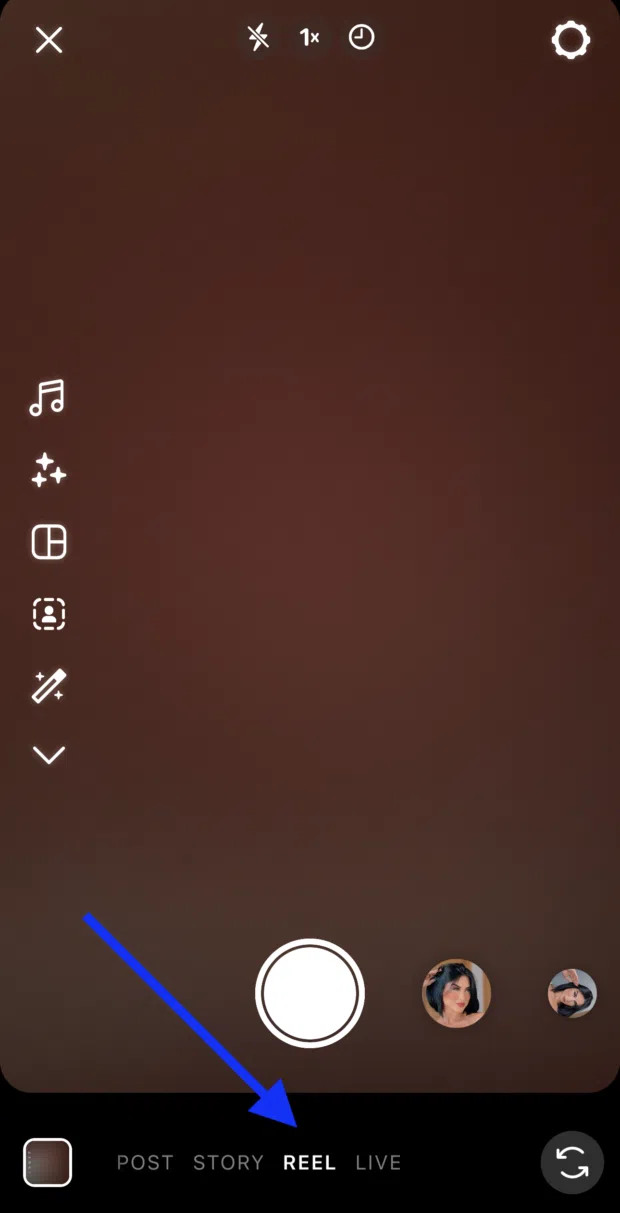Building a business has never been easier, but the landscape is also more competitive. The difference between success and failure often comes down to how quickly you can execute. You need to understand your market and know how to scale your operations. AI tools can help you get off the ground.
If I had to rebuild my business from scratch today, I'd lean heavily into AI tools to make the process faster, smarter, and more efficient than ever before.
Here‘s exactly how I’d approach rebuilding from zero, and the specific AI tools that would make it possible.
Two Approaches to AI Business Building
Approach 1: Use LLMs to flesh out your ideas.
Every entrepreneur needs to know their niche. If you don’t have a unique angle, you’ll never stand out in the crowded market. So, you need to be specific. I'd approach it like a research sprint using AI tools to cut through the noise and find real opportunities.
AI tools allow you to organize and vet your ideas. You can start a conversation with ChatGPT or OpenAI’s advanced voice mode and flesh out all your different ideas through the discussion. I would ask things like:
- What are the pros and cons of this idea?
- Do you see potential downsides to this?
- What would you change about the idea?
This lets you freeflow. Later, you’ll have the conversation saved in your ChatGPT dashboard, so you can look back at the conclusions. Next, tell it to summarize what you’ve discussed and give you a list of the top ten ideas for cool companies.
From there, you can use other AI tools to research and validate your ideas.
My Next Wave co-host Nathan Lands adds a spin to this approach. He says, “I would go do some Perplexity searches and see if there are existing companies in the areas that I’m interested in.” Look at the websites of those companies and copy/paste them into ChatGPT to start your research into industries you’re not familiar with.
The Step-by-Step Process for Validating Business Ideas
Once you’ve got a list of your top ten business ideas, you’ll need to test those ideas with an audience to see which one sticks.
To do that, I suggest a tool like Mixo, which can rapidly build a website with a single prompt. With Mixo, you can create a few test sites that you can show to a focus group. You can show potential buyers a real mockup to see what they’re more likely to spend money on. The steps below can help you get started.
- Give Mixo the details about the software products you’re considering. Based on that idea, Mixo will create a landing page for you with images and copy.
- Have it create ten different websites — one for each idea you’re interested in. Make sure each website has an email opt-in box so people can join the product's waitlist.
- Buy ads on Facebook, Google, Twitter, or whichever platform your potential users hang out on. You should get ads for each landing page. Then, whichever one has the most interest via the waitlist, go make that product.
- When you release the product, hit up the people who joined that specific waitlist. Since you’ve already generated an email list beforehand, you’ve got your first marketing campaign ready to go.
- And of course, also email the other nine lists and let them know you didn’t make the product they signed up for. If the products are similar, you can ask them to check out the one you actually made.
Now that you have the idea, it’s time to build out relevant features. Whatever you decide to build, you’ll want to use AI to analyze the features that should be included or excluded. To start, I recommend finding products that already exist that are close to your idea. You can then riff off of them to build yours. Here’s the step-by-step process.
- Find reviews in places like Reddit or Trustpilot, or any place where you can gather comments, reviews, and feedback.
- Copy and paste everything you find into Claude. Then, ask for a sentiment analysis to understand what people love or hate about the product. When you build your version of the product, make it better than the one that exists.
- For marketing, lean into those differences. If people love a feature, highlight that feature in your campaigns. If they hate something or are asking for a feature to be added, then add that functionality.
Approach 2: Scale your content with AI.
If I were starting a new business now, I would focus on content creation. There’s more opportunity than ever to influence LLMs and dominate AI overviews with specific, bottom-of-the-funnel keywords.
AI can help you create the content you need to get in front of your customer — wherever they’re at. Here’s how I would do it:
- Pick a niche topic that you’re really excited about. I would pick something I have some experience with that I can talk about myself. If you dive down into sub-niches, there’s unlimited potential.
- Use AI to help with ideation. Right now, I constantly use Perplexity and Claude in my AI stack. Use those tools to research your niche until you understand that universe inside and out.
- Create as much content around those topics as possible. AI can help you outline those posts or even write them for you.
- Expand into multimedia. Let’s say I want to do a video about making 3D walkthroughs of houses for a real estate product. I can ask Claude how I should make the video. What’s the flow? What camera do I need? How can I hold people’s attention? It will generate an outline for me, and I can follow those notes to make sure I hit all the beats.
- Use AI tools to speed up the production process. For example, TimeBolt can locate all the silences and then remove them from short-form videos. That’s hours saved.
Essential AI Tools for Modern Business Building
Building a business used to require massive upfront investment, months of development, and teams of specialists. Today, you can validate an idea, build a working prototype, and start acquiring customers faster than ever before — if you know which tools to use.
Let’s dive deep into the tools I find most helpful.
Perplexity: Validating Ideas With Speed

Perplexity is a large language model, like ChatGPT or Claude, but it also searches the internet whenever you ask it a question. I find Perplexity’s informed responses hard to beat. You can ask Perplexity what people are searching for right now, what they’re struggling with, or what content they want. This will help you zero in on a niche where you can make an impact.
You can also use Perplexity to find information that web scraping tools can’t get to. If there’s nothing on the website to scrape, it finds reviews from Reddit or TechCrunch, and then tells me what the tool is all about. I’ve used this process to discover product details for my we,bsite Future Tools.
Cursor, Repilt, and Firebase: Managing Your Product and Website
If you’re launching a new business, these three software create the perfect tech stack. You can build a product, create a website, and keep everything up-to-date easily.
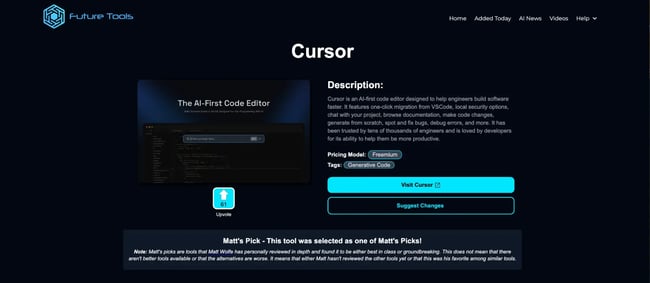
It all starts with Cursor, an AI code editor that can help you build your software faster. The biggest benefit? Cursor uses your entire code base for context, so the output is accurate and integrates into the larger system.
With retrieval augmented generation (RAG), Cursor looks through the text of all your uploaded files and uses that information to complete the code and improve accuracy in the software you're creating.
Now, you need to build a website that attracts buyers and keeps customers in the loop about your offering. Replit moves you from idea to website, all with AI. Replit’s Cursor integration allows you to automatically link any product changes to your website, eliminating any duplicate work.
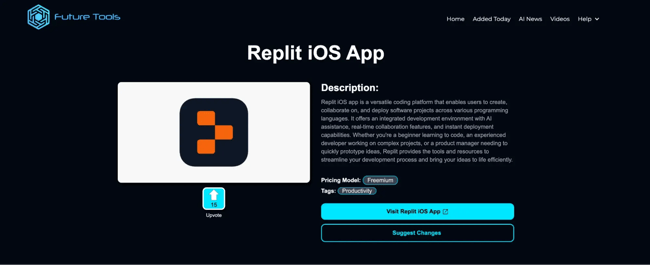
Replit manages the front end, and Firebase takes care of the backend. Firebase can help handle your hosting and keep your databases organized. This tool also handles single sign-in, using existing accounts like Google or Apple, so you don’t have to worry about login functionality.
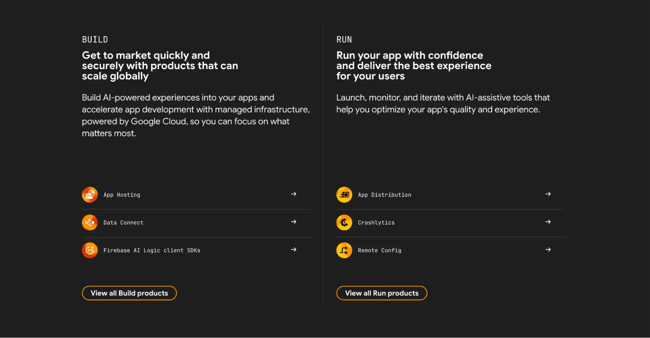
So, with Cursor to write the code, Replit to host the front end, and Firebase to host the back end, you’ve got an integrated AI approach for building your business.
NotebookLM: Creating Well-Researched Content
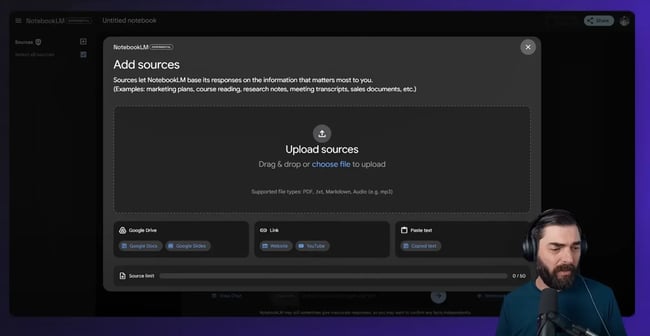
NotebookLM is an AI research assistant that can read your sources and help you write, summarize, and brainstorm all in one place.
I use this to get breakdowns of complex academic papers so I can quickly and easily understand the information. NotebookLM can also create mini-podcasts from the documents. I can use those summaries later when creating my own content.
Even in the age of AI, your business needs a face.
AI can help you in every step of building your business. But, your human presence and brand are still essential.
As people are inundated with AI-generated content and avatars, they’ll look for real humans. When I click on a YouTube video and hear an AI voiceover, I hit the back button immediately because I assume it’s low-effort content. I want to hear a human explain things to me.
So, you need to showcase your real voice and unique personality to build trust. Your content will need a face in content creation. They should get to know and build a bond with you personally.
I keep that human element front and center at Future Tools. I personally curate every tool that goes on the site. I use AI to scrape the product details so I can easily review the tool before it goes up, but each recommendation has my authentic stamp of approval. AI and personalized content are totally compatible — and totally necessary going forward.
Leveraging AI Tools to Build Your Business
Now you have my actionable tech stack, so you can start building your business today. For more actionable insights and industry trips on how AI can power your business, check out The Next Wave Podcast.


